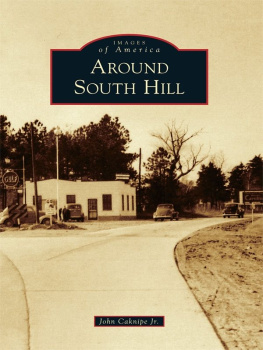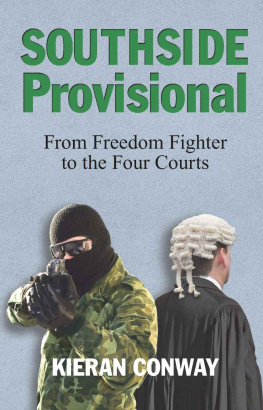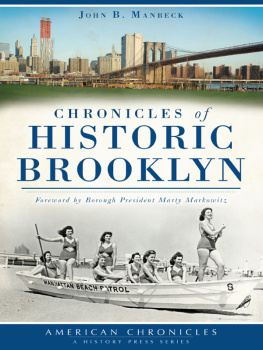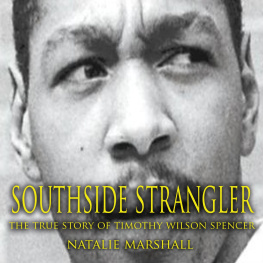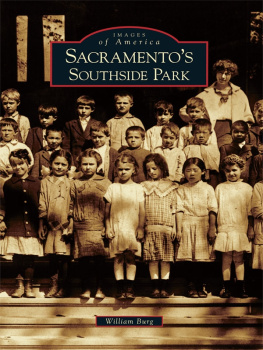Published by The History Press
Charleston, SC 29403
www.historypress.net
Copyright 2014 by John Caknipe Jr.
All rights reserved
First published 2014
e-book edition 2014
ISBN 978.1.62585.021.8
Library of Congress CIP data applied for.
print edition ISBN 978.1.62619.503.5
Notice: The information in this book is true and complete to the best of our knowledge. It is offered without guarantee on the part of the author or The History Press. The author and The History Press disclaim all liability in connection with the use of this book.
All rights reserved. No part of this book may be reproduced or transmitted in any form whatsoever without prior written permission from the publisher except in the case of brief quotations embodied in critical articles and reviews.
ACKNOWLEDGEMENTS
Thanks to Womack Publishing Company, Inc., for printing many of my stories in the series: Remember the Gray in the South Hill Enterprise, South Hill, Virginia, and Unsung Heroes in the News Progress, Chase City, Virginia, since the spring of 2009. Thank you to editors Nick Elmes, who, while the editor of the News Progress, encouraged me to write the stories and then encouraged my writing a second series when he went to the Enterprise; Jeff Humber, editor of the News Progress in 2009 and 2010, for his support and encouragement in publishing my first series of stories; and Dallas Weston for continuing to publish the stories as space became available. Also, thank you to Patrick Love, managing editor of Womack Publishing for the Enterprise, for his blessing for this project. Thank you to the late Sarah Bearas, editor at the Virginia Historical Society, Library of Virginia, for her support of my stories and inclusion in the Virginia Biography Series.
Since the stories were published, I have completed more research and spoken with a lot more descendants of families from the region. I have completed the reading of the Board of Supervisors Records from 1870 to 1951 and circuit court record books for 1830 through 1871. The stories previously published have been updated with the additional findings, and new stories, which never made it to print, have been added for this volume.
A big thank-you goes to Mark Pace, research librarian/historian, for stories, photos, research, support and use of resources of the Richard H. Thornton Library, Granville County Library System, Oxford, North Carolina. Thank you to Wanda Brooks, historian, Southside Regional Library, Boydton, Virginia, for her assistance and support. Thank you to my wife, Betty McKinney Caknipe, for taking many of the photographs, scanning and all the driving excursions. Id also like to thank her for her patience in putting up with my new passion for the history of the region.
I sincerely want to thank the citizens of the Piedmont area for their support with stories, family histories and photos, as well as purchases of the newspapers to follow my stories and purchases of previous books on the Southside history. Finally, I wish to thank Beth Coates, director, and the staff and volunteers of the South BostonHalifax County Museum of History and Art for their gracious assistance with research and resources. Their genealogy center is staffed by several friendly and supportive volunteer historians.
INTRODUCTION
Little was known about the Piedmont region in the seventeenth century, except that the governor of Virginia wanted to establish a relationship with the Indians for trade. He offered incentives for adventurers to explore and settle in the Wild West, build a ferry system to cross the rivers and establish trading posts. The goal was to enhance the fur trading with the Sapony Nation, especially the Occoneechee tribe, which had established a reputation as the trade Mecca on the East Coast for fifteen nations ranging from Syracuse, New York, to Savannah, Georgia. But then in 1678, the famous Nathaniel Bacon raid and brutal attack on the Occoneechee tribe on Occoneechee Island and at Fort Occoneechee changed the mission and signaled that the Wild West was no longer wild. In the early 1700s, a treaty was signed by the governor of the colony of Virginia with some bands of Indians. It was referred to as the Treaty of the Middle Plantation and included the lands south of the Appomattox and Blackwater Rivers. This provided for a protected area for the Indians south of the rivers and a protected area for the new settlers north of the rivers.
Then, in 1705, the House of Burgesses decided to amend the boundaries. The new protected area, for the Indians, was an area six miles in circumference, near the southwest border of Brunswick County. This opened the Southside Virginia area to development and exploration but resulted in the Tuscarora Indians along the south side of the Roanoke River in North Carolina staging a violent revolt. The new governor of Virginia, Alexander Spotswood, believed that a community with a trading post, fort and nearby Indian community could bolster westward migration by quelling some of the violence. Thus, he sought to enhance trade routes and increase income, trade and taxes. In 1714, Fort Christanna in Brunswick County, Virginia, was built.
In 1733, Colonel William Byrd arrived in the region to survey a boundary line between North Carolina and Virginia. The new boundary included a strip south of the river. In some cases, this divided old Royal Land Grants, patents and warrants, with lands being located in both states. The Piedmont region became primarily the counties of Brunswick, Mecklenburg, Charlotte, Lunenburg, Halifax and Pittsylvania in Virginia and Granville, Vance, Warren, Person and Halifax in North Carolina. Some of the early settlers to the region were prominent in U.S. history, such as Randolph, Hopkins, Lee, Marshall and Jefferson. The rivers that needed numerous ferry crossings and settlements in Virginia were the Roanoke, Dan, Hyco, Bannister and Meherrin.
West of Occoneechee, Byrd noted a mineral spring. He also wrote that his guides shot a buffalo standing in a creek for food and dubbed the waterway Buffalo Creek. This area became Buffalo Mineral Springs resort, dating to circa 1789, and was visited by Thomas Jefferson and many other notables. The resort encompassed over 120 acres of land, plus several adjacent farms for support near the intersection of the Hyco and Dan Rivers. With a development of several springs, a water bottling company, multiple hotels, cottages, sporting event areas and supporting buildings, the resort remained operational until 1940. It served as a respite for many during the Civil War. The resort featured entertainers from Virginia and North Carolina, and at one point in 192021, it employed the Epson family (Buddy Epson, along with his sister and father). There were other mineral springs in Southside, including Ogburns in Flat Creek, Palmer Springs Resort, Mecklenburg Mineral Springs in Chase City and others.
In 1798, General Samuel Hopkins (brother of Johns Hopkins), from Palmer Springs, Mecklenburg County, Virginia, and Granville County, North Carolina, was offered the position of surveyor for the western territory of Kentucky, and he accepted. Several prominent families from the Piedmont region followed him west. Some went to Tennessee and Arkansas, while others traveled to Alabama, Mississippi and Kentucky. Many took their pedigree horses with them. One family of note was John and Mary G. Poor James. John was the grandson of notable William James from England. Arriving in Kentucky from the Dan River area of Pittsylvania County, Virginia, one of John and Marys sons was Reverend Richard James, a Baptist preacher. He then moved to Missouri in 1842 to establish a church and became the founder of a Baptist college. His youngest son, Jesse Woodson James, was born there, in 1847.



